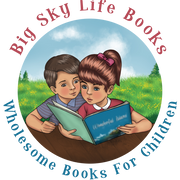From data to design: navigating product data in Shopify: building a Shopify store.
Side Project | Leo Vroegindewey | 2023
Overview of Side Project (2023)

In 2023, I dove into Shopify, and helped the store owner redesign their Shopify store dedicated to children's books. This side project wasn't just about aesthetics but a learning journey into Shopify's capabilities.
Drawing on my time as a Principal Product Designer at Salsify, where I gained invaluable insights into how top-tier e-commerce organizations manage their product data for major marketplaces like Amazon and Walmart, I applied my experience to my Shopify project.
My product design and data management background allowed me to understand that managing product data was the center of this project. Once I understood how to manage the product data, I could overhaul the Shopify store and create a seamless and effective user experience.
During the project, I had to manage the following data:
- 500 SKUs (products)
- +10k store data points
- +2300 images
After the redesign, the store transformed into a vibrant, user-friendly destination, overcoming Shopify's technical limitations. This experience has equipped me with the expertise to build any Shopify store, focusing on robust backend data mapping for scalability.
Goals
This Project Taught Me
- This side project was a deep dive into a data-first mindset, utilizing tools like Metafields Guru and understanding the nuances of Shopify.
- I learned to navigate Shopify's technical constraints, finding creative solutions to enhance user experience.
- This data-centric approach, I realized, is universal and can be adapted to any industry.
Roles and Processes
I teamed up with a great Shopify developer (Chris Dodd) and worked with him to make the new Shopify store a reality. Chris was an amazing dev to work with, and the months flew by as we checked off all the to-do items on my checklist.
Data Entry
Before I opened my design tool, I spent time looking at the product data of books. I wanted to understand what was relevant and which product data must be displayed.
Once I understood the data, I started thinking about the hierarchy of the data and how it might be displayed on the Shopify store and the individual pages. Then I started meticulous data entry into Metafield Guru, laying the groundwork for seamless integration with the new site templates.
Design
Once I fully understood the product data that I had to work with. I started researching, drawing inspiration from various e-commerce patterns I found on Landbook. If I saw a compelling pattern or page template, I would download it into Figma, copy the layout, and display it in my Figma file.
Identifying, copying, and adjusting e-commerce designs from Landbook in my Figma file significantly improved my design process. It's how I designed the PDP and book collection page.
Project Tasks
- Curated images from Adobe Stock.
- Integrated Flodesk for email collection and newsletters.
- ChatGPT and Grammarly for copywriting tasks.
- Canva for image manipulation. (A very promising tool but has terrible team/project management capabilities)
- Used Air as a DAM to store all assets.
- Consulted Ahrefs, and Semrush for SEO.
- Integrated Ghost blog with Shopify site.
Development
Partnering with a Shopify developer, we worked together for several months. My designs were brought to life, with metafields and other elements expertly integrated, resulting in a store that's not only visually appealing but also functionally robust.
Outcome
The new store design received glowing customer feedback, praising its ease of navigation and book-sorting features.
- The redesign led to an 8% reduction in bounce rate within three weeks.
- Increased page views per customer.
- Boosted partnership revenues.
This project didn't just redesign a store; it created a community and a memorable shopping experience.
I'm Leo, the writer behind The Triangle Offense Newsletter. Diving deep into UX, CX, and customer-centric business strategy, I provide insights into using timeless CX and UX techniques to attract and retain customers to unlock business growth. Join me on this journey, and let's reshape how to grow a business together.
